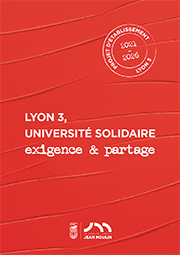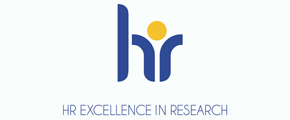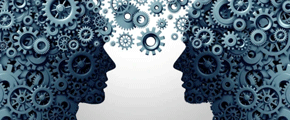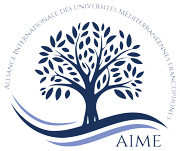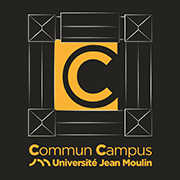AccueilRechercheProgrammes et productions scientifiquesThèsesThèses soutenuesThèses soutenues - 2006-2021Thèses soutenues - 2011
-
Partager cette page
- Recherche,
GROS Gilles
Histoire et épistémologie de l'art dentaire
Publié le 14 mars 2011 – Mis à jour le 17 juin 2011
Thèse en Philosophie - Etude des systèmes soutenue le 4 avril 2011
L’épistémologisation de l’art dentaire se fonde sur l’évolution de deux concepts-clés des sciences de la nature : la matière, objet de la physique et de la chimie, et la vie, objet de la biologie. Elle est marquée par deux grandes discontinuités qui délimitent les trois grandes périodes de son histoire. La première discontinuité se situe au début du 18e siècle quand Fauchard, influencé par les idées de Galilée et de Descartes, fait de l’art dentaire une science de l’ingénieur et l’introduit dans la modernité. La seconde discontinuité a lieu à la fin du 19e siècle, après que l’art dentaire a intégré des concepts-clés énoncés par C. Bernard, Virchow et Pasteur qui accentuent sa biologisation et que des découvertes technologiques révolutionnaires le conduisent à instituer une alliance durable entre science et technique. Au 20e siècle, l’invention technique débouche sur l’affolement technique et la biologisation s’accélère. Alors l’art dentaire prend conscience de la nécessité d’atténuer la discordance entre valeurs organiques et valeurs mécaniques. Ce qui l’amène à renouveler son paysage disciplinaire, à se spécialiser et à adhérer à la pensée complexe. A la fin du 20e siècle, il accède aux mécanismes de la vie et se mêle d’ingénierie tissulaire, d’où de fortes présomptions d’une vaste réforme de son programme épistémologique et thérapeutique au 21e siècle.
The epistemologisation of the dentistry is based on the evolution of two concept-keys of sciences of nature : matter, object of physics and chemistry, and life, object of biology. It is marked by two great discontinuities which delimit the three great periods of its history. The first discontinuity is at the beginning of the 18th century when Fauchard, influenced by the ideas of Galileo and Descartes, makes dentistry engineering and introduces it into modernity. The second discontinuity takes place at the end of the 19th century, after the dentistry integrated concept-keys stated by C. Bernard, Virchow and Pasteur who accentuate his biologisation and whom revolutionary technological discoveries lead it to institute a durable alliance between science and technology. At the 20th century, the technical invention leads to the technical panic and the biologisation accelerates. Then the dentistry becomes aware of the need for attenuating the discordance between organic values and mechanical values. What leads it to renew its disciplinary landscape, to specialize and adhere to the complex thought. At the end of the 20th century, it reaches the mechanisms of the life and is interfered tissue engineering, from where strong presumptions of a vast reform of its epistemological and therapeutic program to the 21th century.
mots-clés : art dentaire, épistémologisation, discontinuité, concept, biologisation, science, technique, mécanique, matière, vie, ingénierie, complexe.
Keywords : dentistry, epistemologisation, discontinuity, concept, biologisation, science, technology, mechanics, matter, life, engineering, complex.
Directeur de thèse : Daniel PARROCHIA
Membres du jury :
Denis BOURGEOIS, Professeur, Université d’odontologie de Lyon
Philippe JAUSSAUD, Professeur, Université Lyon 1
Pascal MAIRE, Pharmacien hospitalier, Docteur d’Etat es Sciences, Université Lyon 1
Daniel PARROCHIA, Professeur, Université Jean Moulin Lyon 3
Président du jury : Philippe JAUSSAUD
Mention : Très honorable avec les félicitations du jury
Equipe d'accueil : Institut de Recherches Philosophiques
The epistemologisation of the dentistry is based on the evolution of two concept-keys of sciences of nature : matter, object of physics and chemistry, and life, object of biology. It is marked by two great discontinuities which delimit the three great periods of its history. The first discontinuity is at the beginning of the 18th century when Fauchard, influenced by the ideas of Galileo and Descartes, makes dentistry engineering and introduces it into modernity. The second discontinuity takes place at the end of the 19th century, after the dentistry integrated concept-keys stated by C. Bernard, Virchow and Pasteur who accentuate his biologisation and whom revolutionary technological discoveries lead it to institute a durable alliance between science and technology. At the 20th century, the technical invention leads to the technical panic and the biologisation accelerates. Then the dentistry becomes aware of the need for attenuating the discordance between organic values and mechanical values. What leads it to renew its disciplinary landscape, to specialize and adhere to the complex thought. At the end of the 20th century, it reaches the mechanisms of the life and is interfered tissue engineering, from where strong presumptions of a vast reform of its epistemological and therapeutic program to the 21th century.
mots-clés : art dentaire, épistémologisation, discontinuité, concept, biologisation, science, technique, mécanique, matière, vie, ingénierie, complexe.
Keywords : dentistry, epistemologisation, discontinuity, concept, biologisation, science, technology, mechanics, matter, life, engineering, complex.
Directeur de thèse : Daniel PARROCHIA
Membres du jury :
Denis BOURGEOIS, Professeur, Université d’odontologie de Lyon
Philippe JAUSSAUD, Professeur, Université Lyon 1
Pascal MAIRE, Pharmacien hospitalier, Docteur d’Etat es Sciences, Université Lyon 1
Daniel PARROCHIA, Professeur, Université Jean Moulin Lyon 3
Président du jury : Philippe JAUSSAUD
Mention : Très honorable avec les félicitations du jury
Equipe d'accueil : Institut de Recherches Philosophiques
Documentation
Mise à jour : 17 juin 2011

